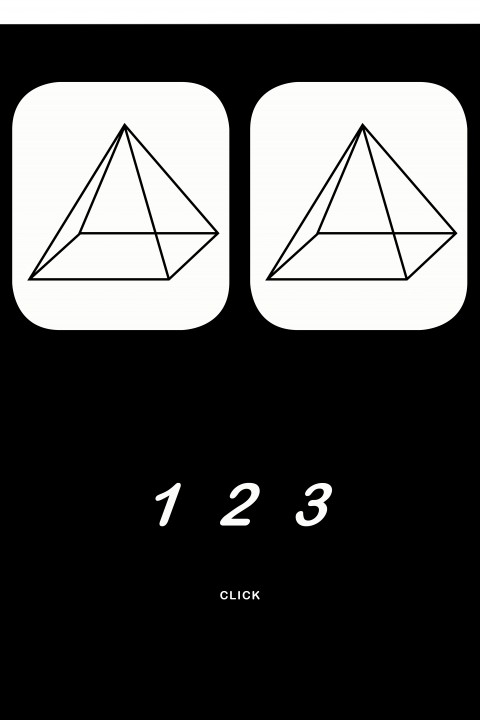Poster work. 70 x 105 cms
The drawing of the two pyramids in 1 2 3 (Necker Pyramid) follows the principle of the reversion ‘Necker Cube’, developed in 1833 by the Mathematician Louis Albert Necker. The ‘Necker Cube’ bared two perspectives of its depicted geometrical form and was used to measure the duration of human visual perception: If the beholder focused on one perspective of the cube, her eye would automatically detect the other perspective after three seconds. Having found both perspectives, the eye – after three second – automatically switched from one to the other – and back. Doubling this reversion and applying it to the pyramid, 1 2 3 (Necker Pyramid) uses the possibilities of a visual still image to trigger time and duration by incorporating a specificity of human visual perception. Counting to three. Two eyes look back at you. Asking for just a little time, so those two pyramids will start to dance (to an inaudible music).

1 2 3 (Necker Pyramid) was developed upon invitation to participate in the exhibition Giorgio Moroder’s Pyramid at DUCTAC, Dubai in October 2014.
From the exhibition text: From the birth of synth-based disco to canonisation by Daft Punk, Giorgio Moroder bestrides the history of dance music like an arpeggiating cyborg colossus. However, alongside his musical achievements someone clearly thought there was something of the architect about Moroder. So much so that, some years back, a mysterious Dubai-based corporation asked him to design a pyramid to grace the Dubai skyline. Details are sketchy and the story is alluded to fleetingly in interviews with the great man but, what with one thing and another, the project never left the blueprint stage.
Curated by Simon Coates, the Giorgio Moroder’s Pyramid exhibition continues the conversation and includes specially commissioned work that imagines what the pyramid would have looked like had it been built. Featuring Harold Faltermeyer, Lucky PDF, Shusei Nagaoka, Ghada Da, Veronika Hauer, The Broca Ensemble, Andreas Heller and Andy Buchan.